The Best Types of Awnings to Add Shade and Style to Your Life
Keep it made in the shade—with the right awning


Awnings can do wonders for your outdoor living. Whether you're looking to update your home's exterior with some decorative flair or just want some protection from the elements, awnings are a great option. But awnings vary by factors like shape, fabric, and retractability, so you want to make sure you're choosing the right type for your needs. Here, learn all about different types of awnings so you can find the perfect one for your home.
4 Common Types of Awnings

There are four common types of awnings: patio, window, door, and side awnings. The right choice for you depends on the areas you most want to enhance or protect.
Patio Awning
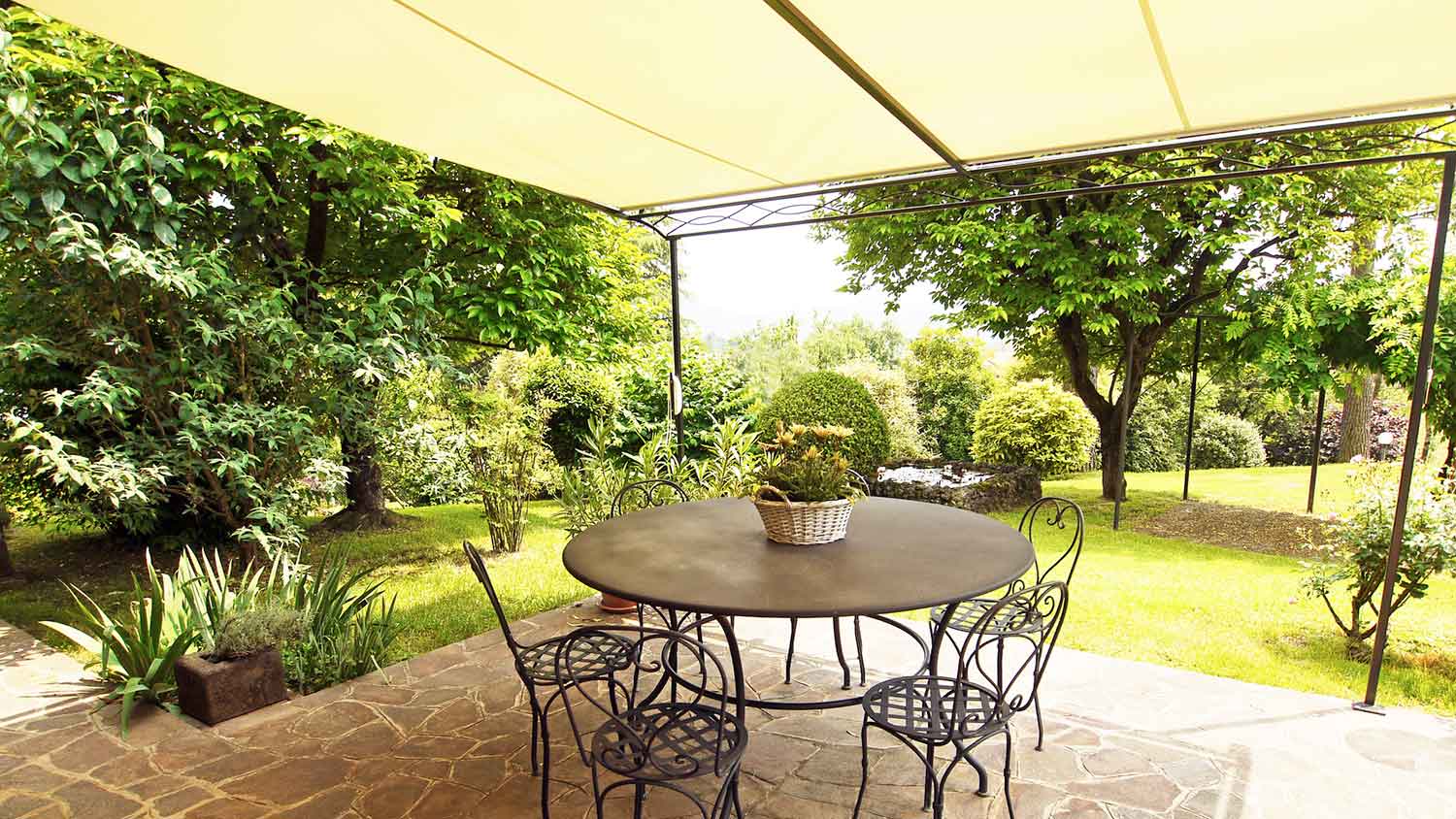
Adding an awning to your patio is a great way to make this space more comfortable, providing shade and protection against the sun's harmful UV rays. Depending on the material you get, patio awnings can also shield your outdoor space from the rain, allowing you to dine alfresco during summer evenings without worrying about getting rained out.
Window Awning
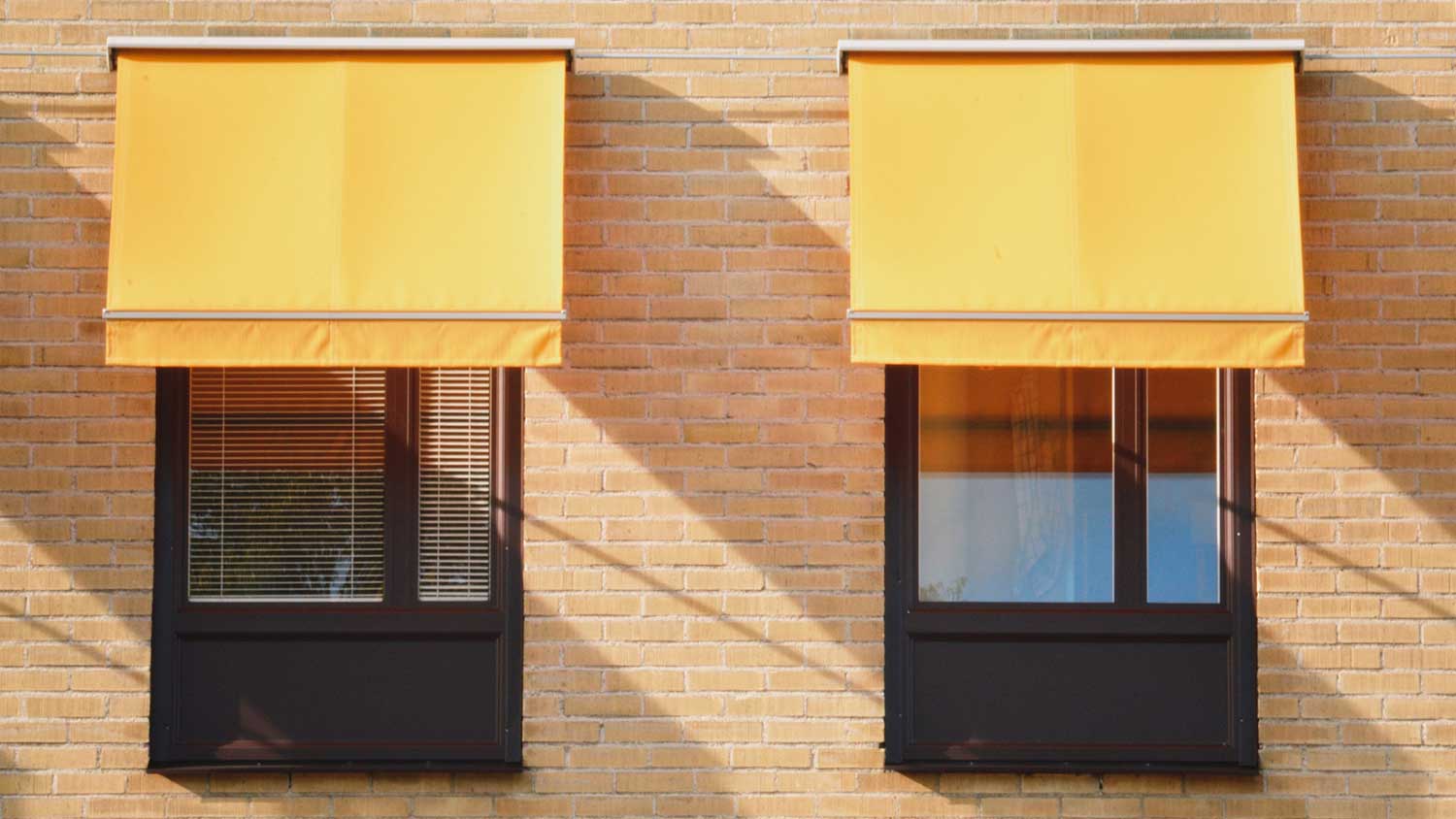
Window awnings are typically installed above the window on the outside of a house. Like blinds, they can help protect your furniture from the sun and keep your home's temperature down during hot months. But most of them are also designed to let in natural light, so you can enjoy a light and bright room without too many UV rays.
Door Awning
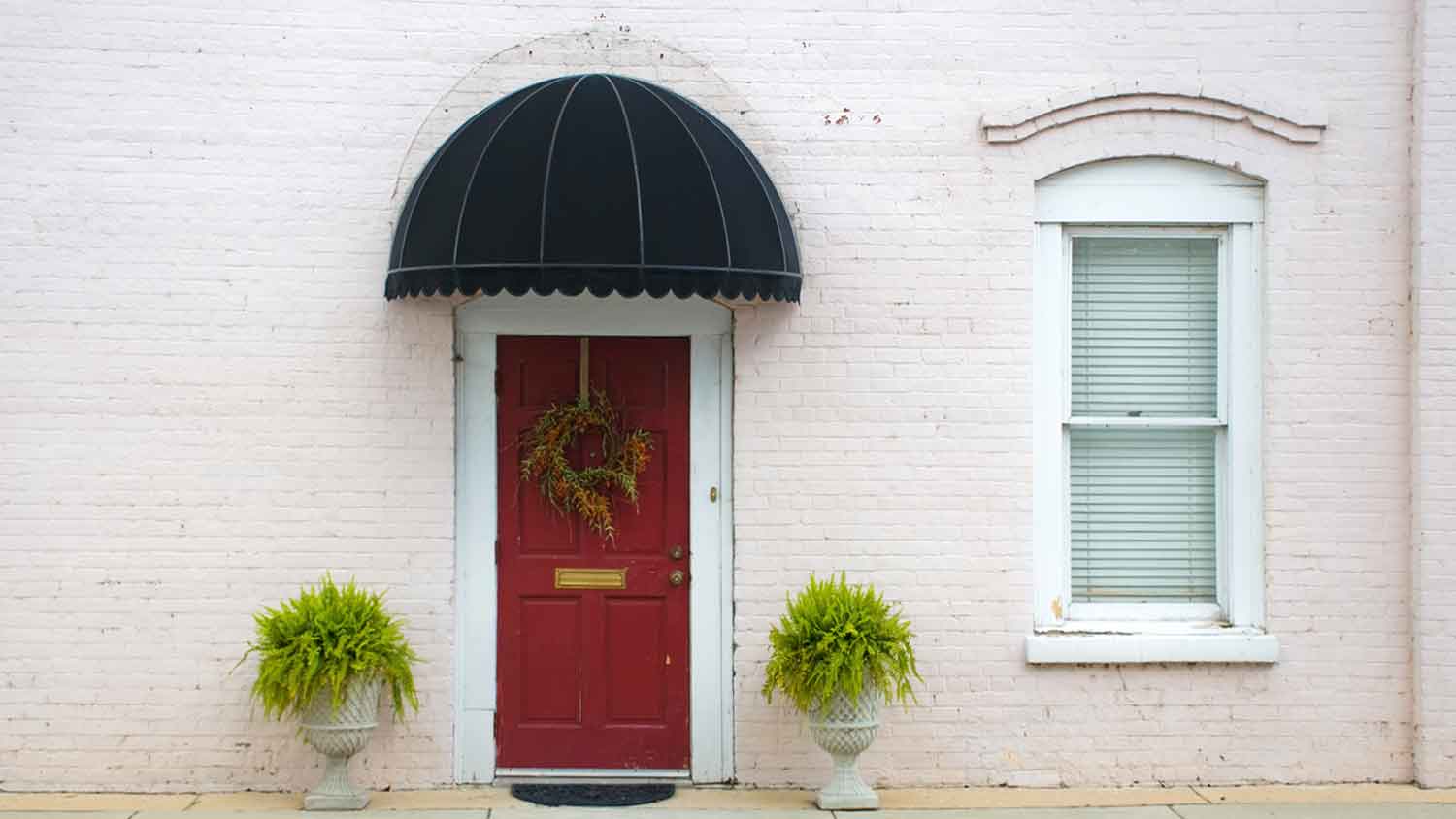
Door awnings tend to be more popular on commercial buildings, but residential houses can benefit from their style and protection as well. Installed right above the door on the home's exterior, they protect your door from the outdoor elements, which any waiting guests or delivery people will appreciate. They also come in many different colors and styles, so they're a great way to enhance your exterior aesthetic.
Side Awning
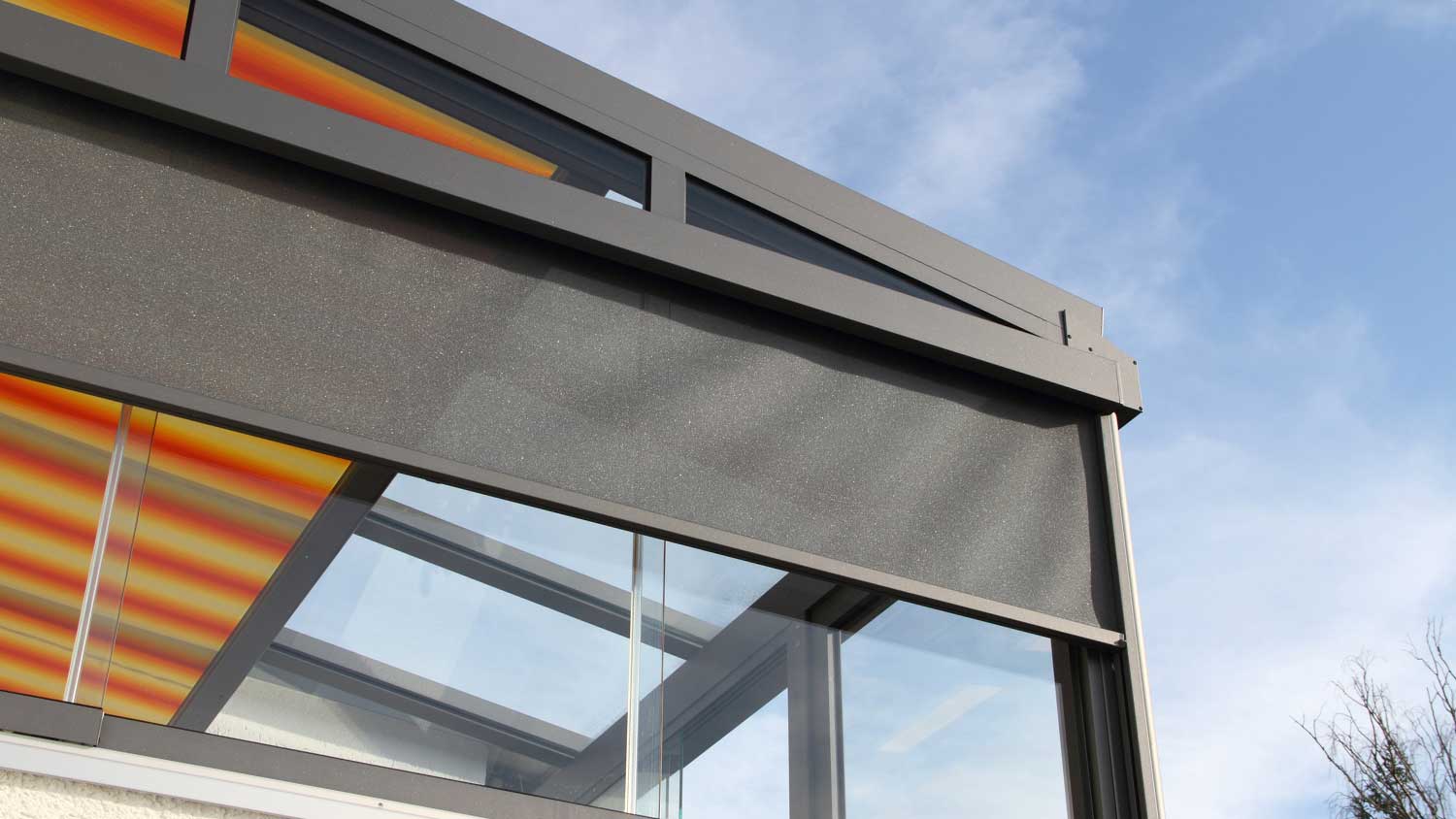
Unlike the aforementioned awnings, which hang above a door, window, or patio, side awnings are designed to block out the sun and provide privacy from the side, sitting perpendicular to the ground or floor. For that reason, they're most often used on balconies and patios when folks want a little more privacy from neighbors and passersby. They also provide welcome protection from the wind on high balconies.
5 Types of Awning Shapes

From concave and convex to sloped and domed, awnings come in a variety of shapes. But some shapes offer certain advantages over others.
Sloped
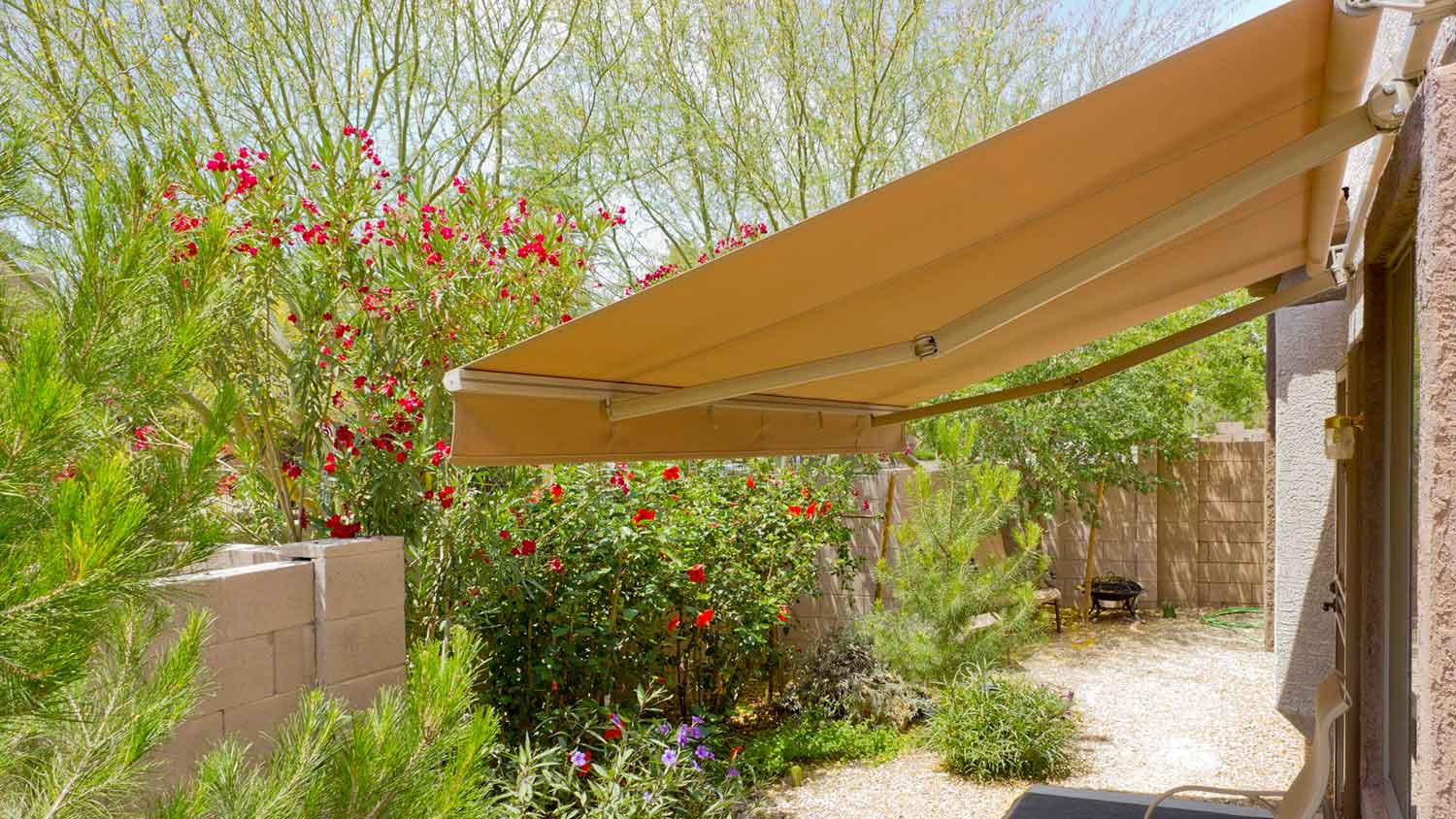
Sloped awnings are among the most common awning shapes. They feature a straight angle starting from the house and sloping down toward the ground, usually at about 45 degrees, but some awnings allow you to adjust the angle. A steep angle allows rain and other precipitation to roll off.
| Pros | Cons |
|---|---|
| One of the most common types for decks and patios | May not work for all uses (like windows and doors) |
| Angle allows rain and debris to roll off | Not as visually interesting as some other types |
Best for: A deck or patio
Concave
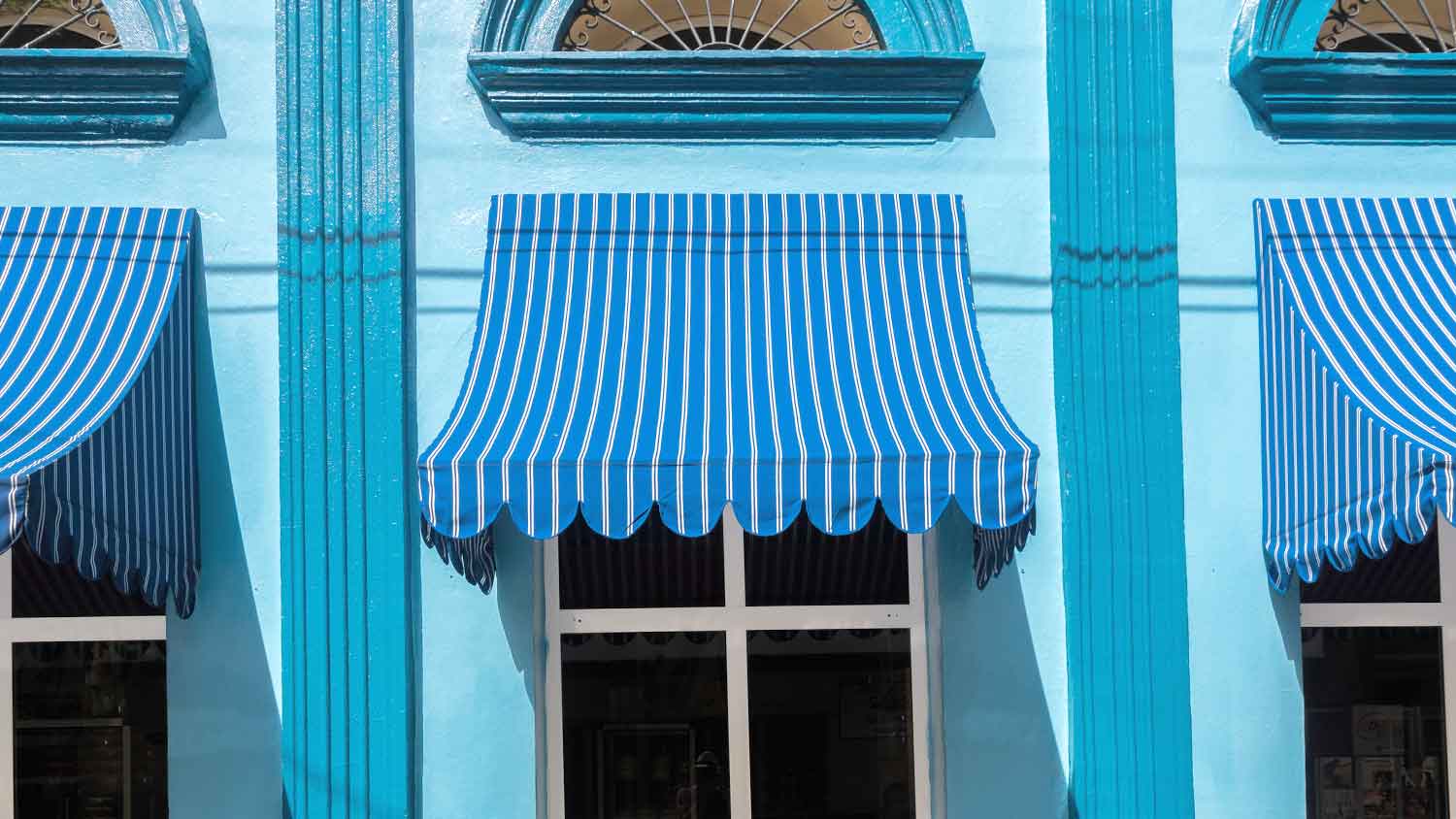
Concave awnings are similar to sloped awnings, but they curve inward slightly in the middle to create a subtle crescent shape. Most often used over windows and doors, they provide protection from the rain and sun while adding some decorative flair to your home's exterior.
| Pros | Cons |
|---|---|
| Inward curve provides a stylistic flair | Usually only for smaller areas, like doors and windows, rather than a whole deck |
| Curve and angle work together to allow rain and debris to roll off |
Best for: Doors and windows
Convex
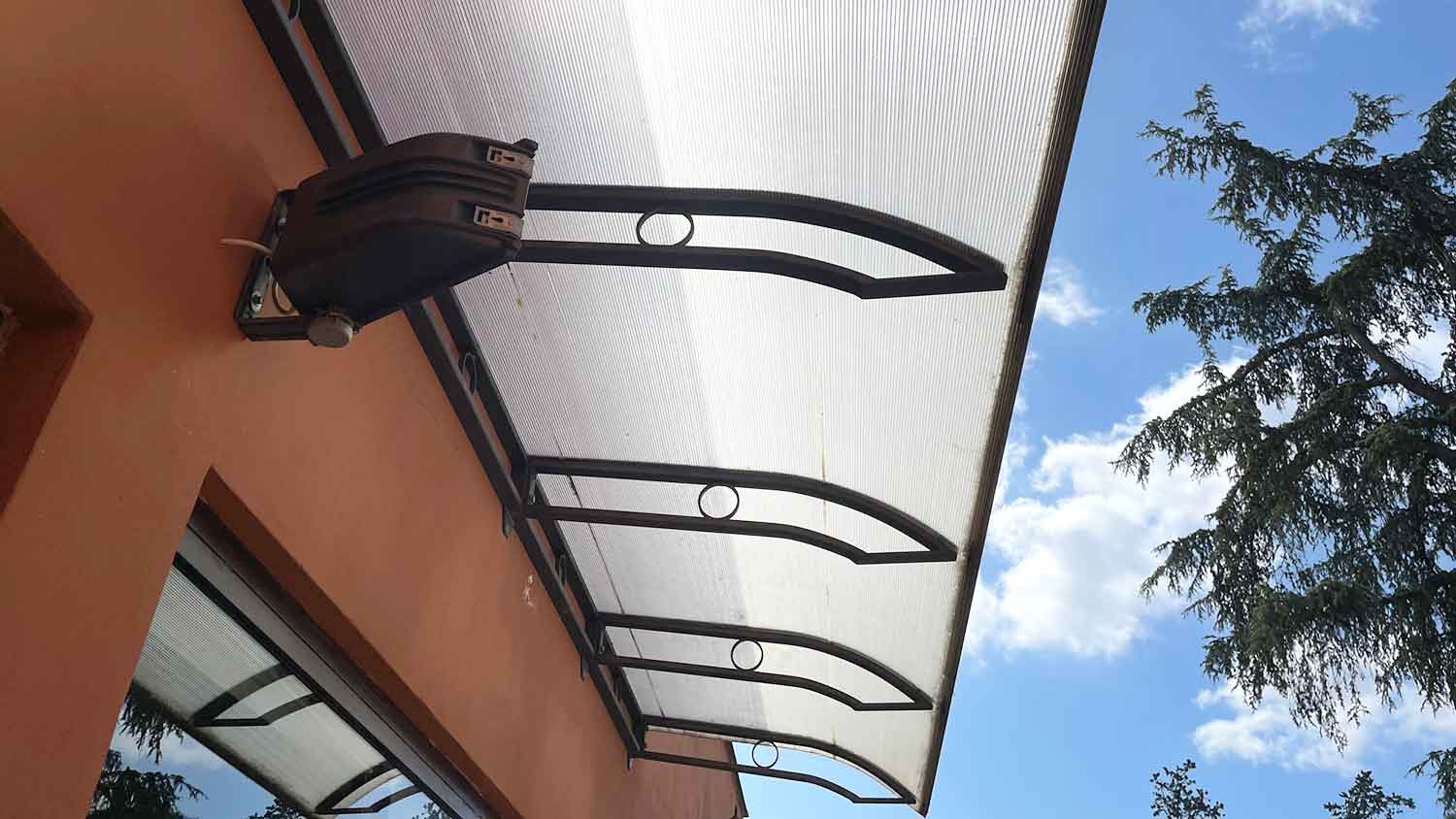
Convex awnings are essentially the inverse of concave awnings, curving slightly outward rather than inward. They're another good option for protecting your windows and doors from the outdoor elements while adding compelling style to the outside of your home.
| Pros | Cons |
|---|---|
| Outward curve provides a different visual design element | Usually only for smaller areas, like doors and windows, rather than a whole deck |
| Curve and angle work together to allow rain and debris to roll off | May not be as visually attractive to some homeowners |
Best for: Doors and windows
Domed

Domed awnings have rounded, deeply convex sides that provide lots of protection against rain and sun. Another common option for doors and windows, they come in many different colors and sizes, and they can add an elegant touch to your outdoor look.
| Pros | Cons |
|---|---|
| Visually intriguing | Usually only for smaller areas, like doors and windows, rather than a whole deck |
| Offers rain and sun protection | Antique look may be hard to match to modern aesthetic |
Best for: Doors and windows
Flat
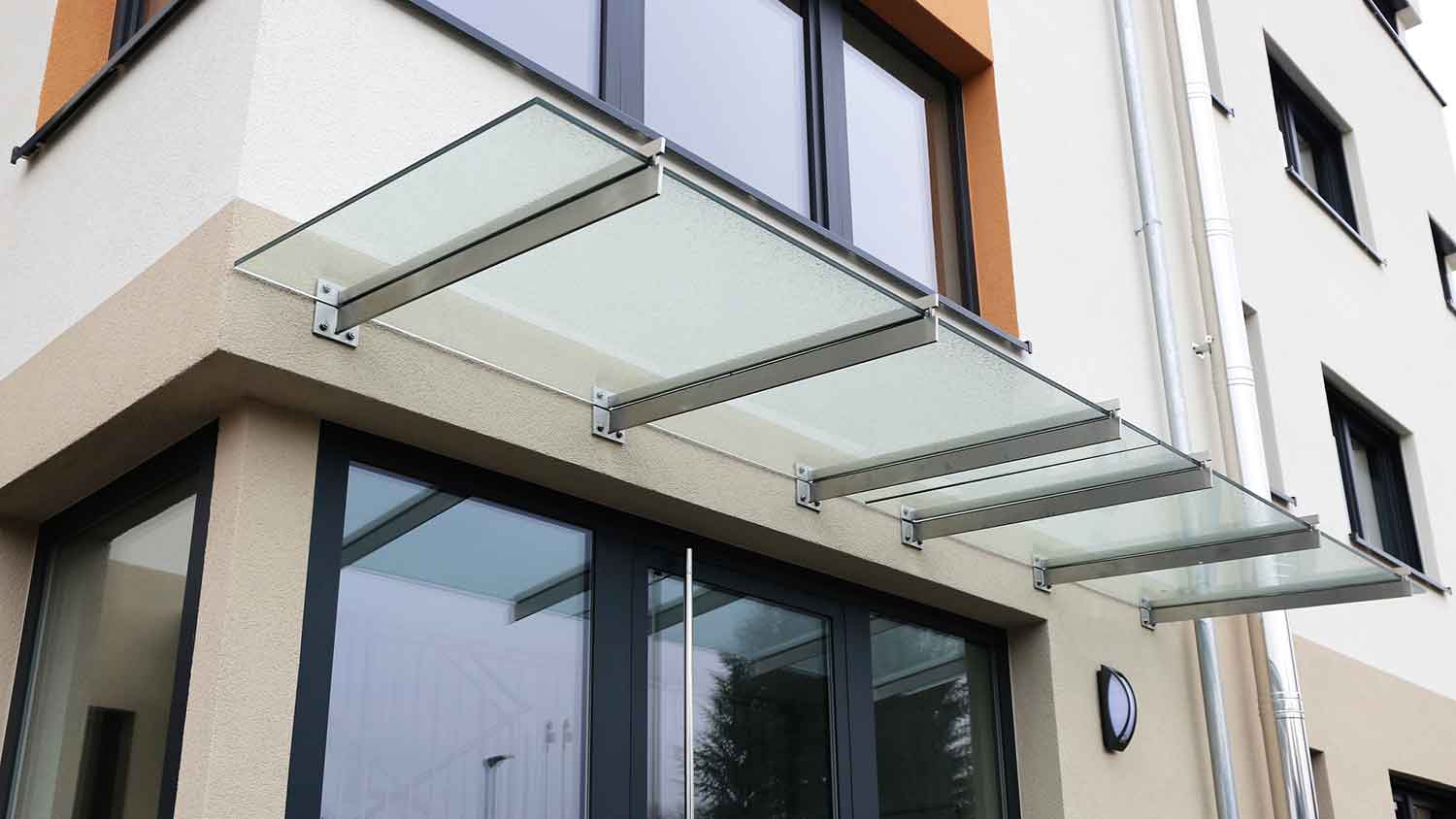
Flat awnings are most commonly used over patios, but they're sometimes installed over doorways as well. Just as their name suggests, flat awnings are installed completely flat over the space, parallel to the ground or floor. They can be a great option for large outdoor spaces, but keep in mind that precipitation can pool on top of them, so if you're worried about that, it's best to opt for one that lets some rain through.
| Pros | Cons |
|---|---|
| Flat, parallel awning surface provides ample shade | Precipitation and debris can collect on the awning |
| Come in sizes large enough to be used over patios or small enough for doors and windows | Can be difficult to clean |
Best for: Patios or doorways in areas with little precipitation
4 Types of Awning Retractability

Some awnings are fixed, while others—called retractable awnings—allow you to open and close as you please. The cost of retractable awnings ranges from $2,000 to $3,500, including installation. How much you'll pay depends on the type.
Manual
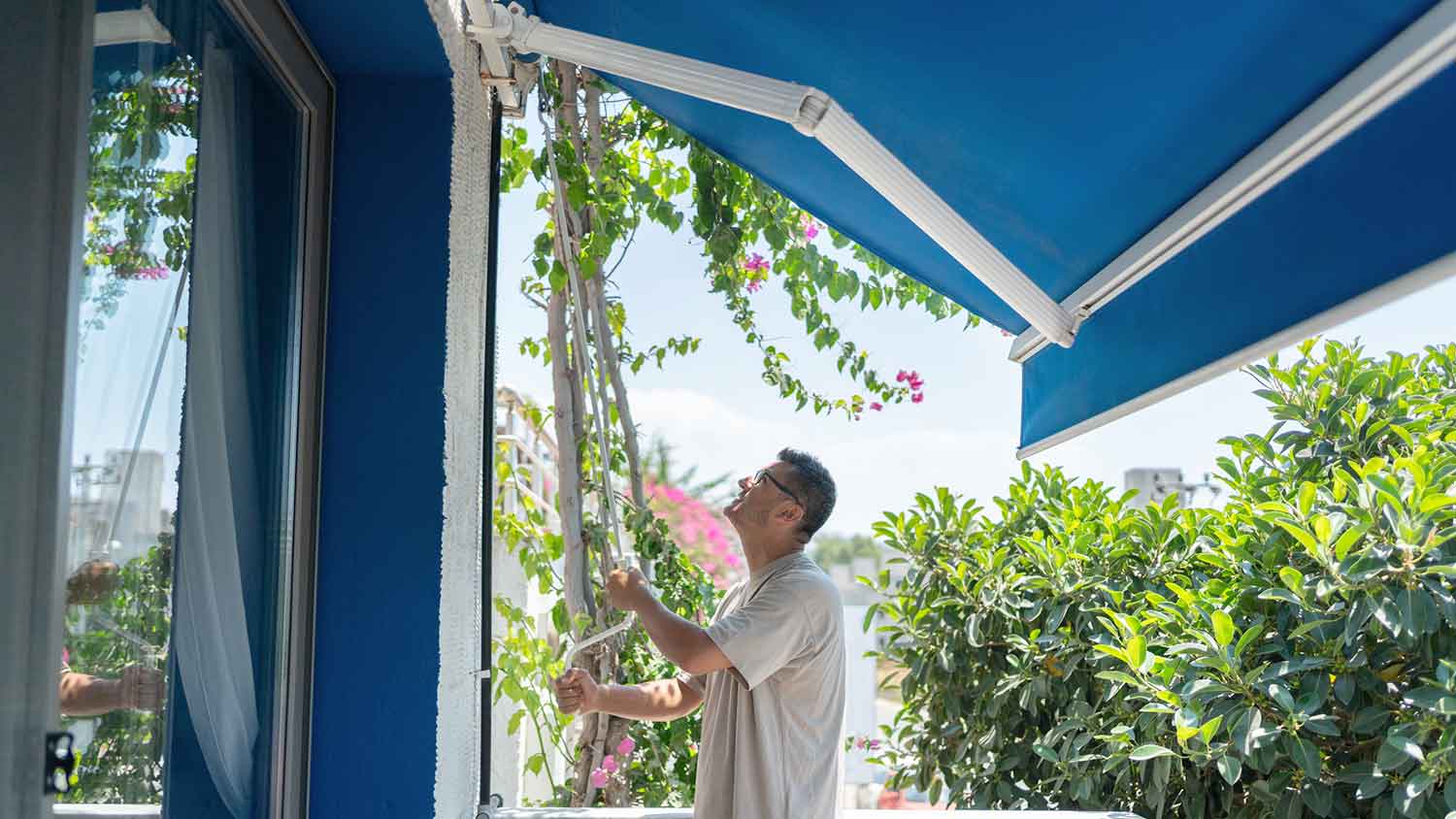
Manual awnings require you to open and close the awning by hand. They usually work using a pulley system, which you can pull whenever you want to adjust them. They're typically more affordable than automatic awnings.
| Pros | Cons |
|---|---|
| More affordable than automatic awnings | Take more physical work to use |
| Don’t require electric power | Not be accessible for those with certain disabilities |
Best for: Budget-conscious people who don’t mind hand-cranking their awning
Motorized
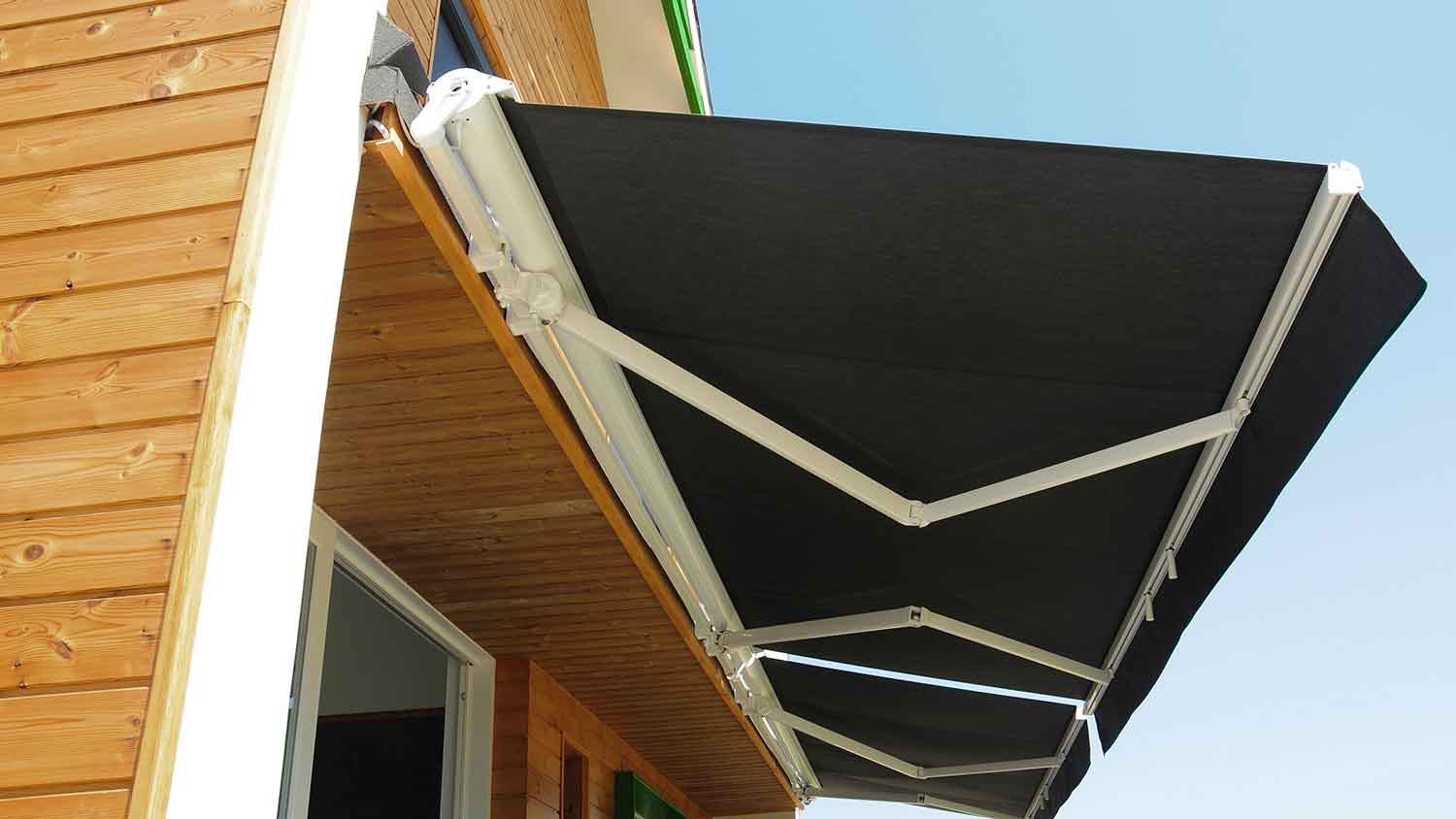
Motorized awnings can open and close with the push of a button, making them a very convenient choice. However, they cost more compared to manual awnings. It's also helpful to keep in mind that they require an electricity hook-up.
| Pros | Cons |
|---|---|
| Easier to use than manual awnings | More expensive than manual awnings |
| Require nothing more than pressing a button | Require access to electricity |
Best for: Those who want the easiest awning experience possible and are willing to pay for it
Fixed
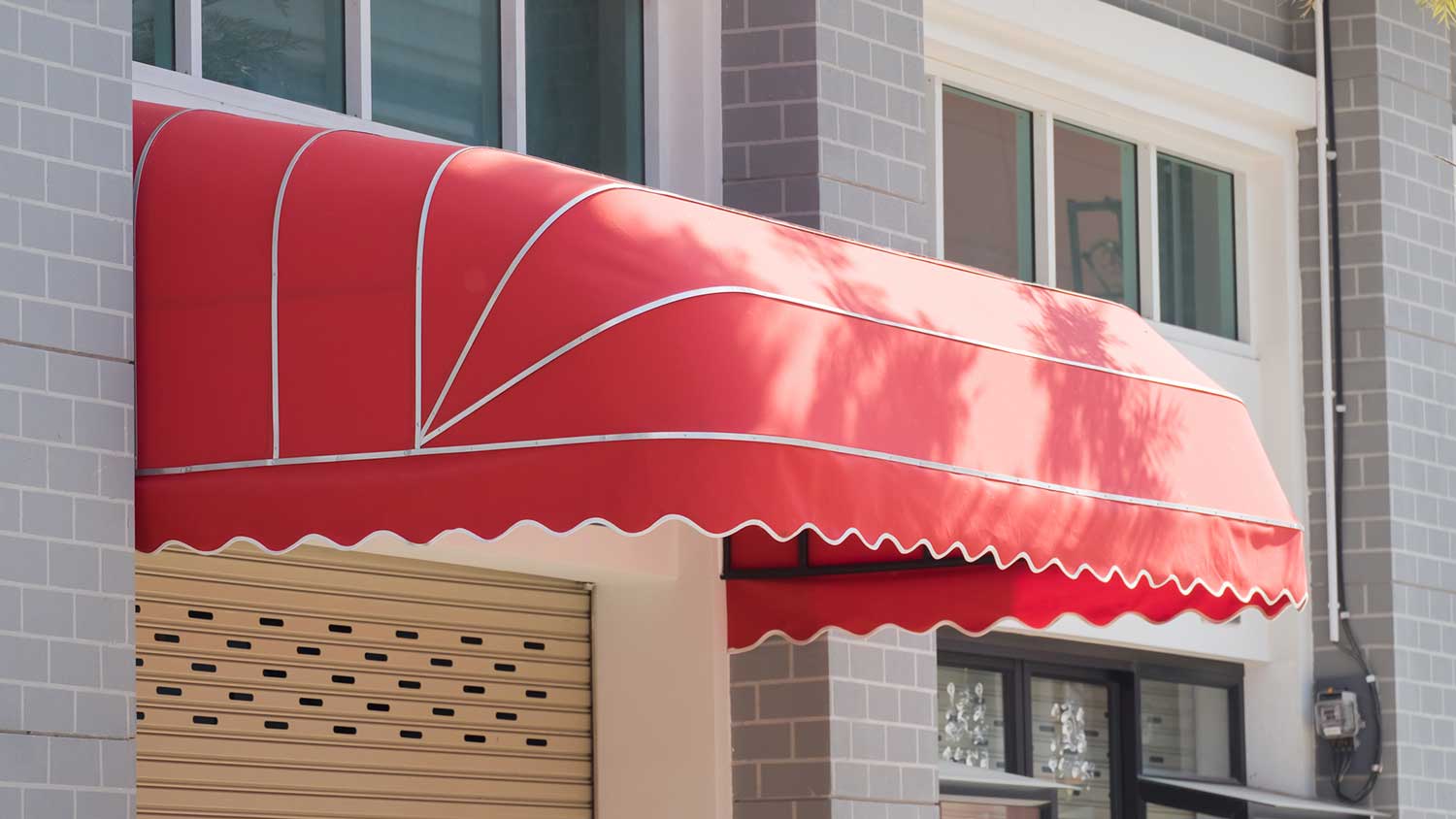
Fixed awnings are not retractable. While fixed awnings take all of the guesswork out of the retraction process, they also create less flexibility when it comes to providing shade for your outdoor living areas.
| Pros | Cons |
|---|---|
| No need to worry about mechanical breakdown of retractable parts | Less flexibility than retractable awnings |
| Steady, reliable source of shade | Not adjustable based on weather |
Best for: Areas where shade is always wanted
Portable
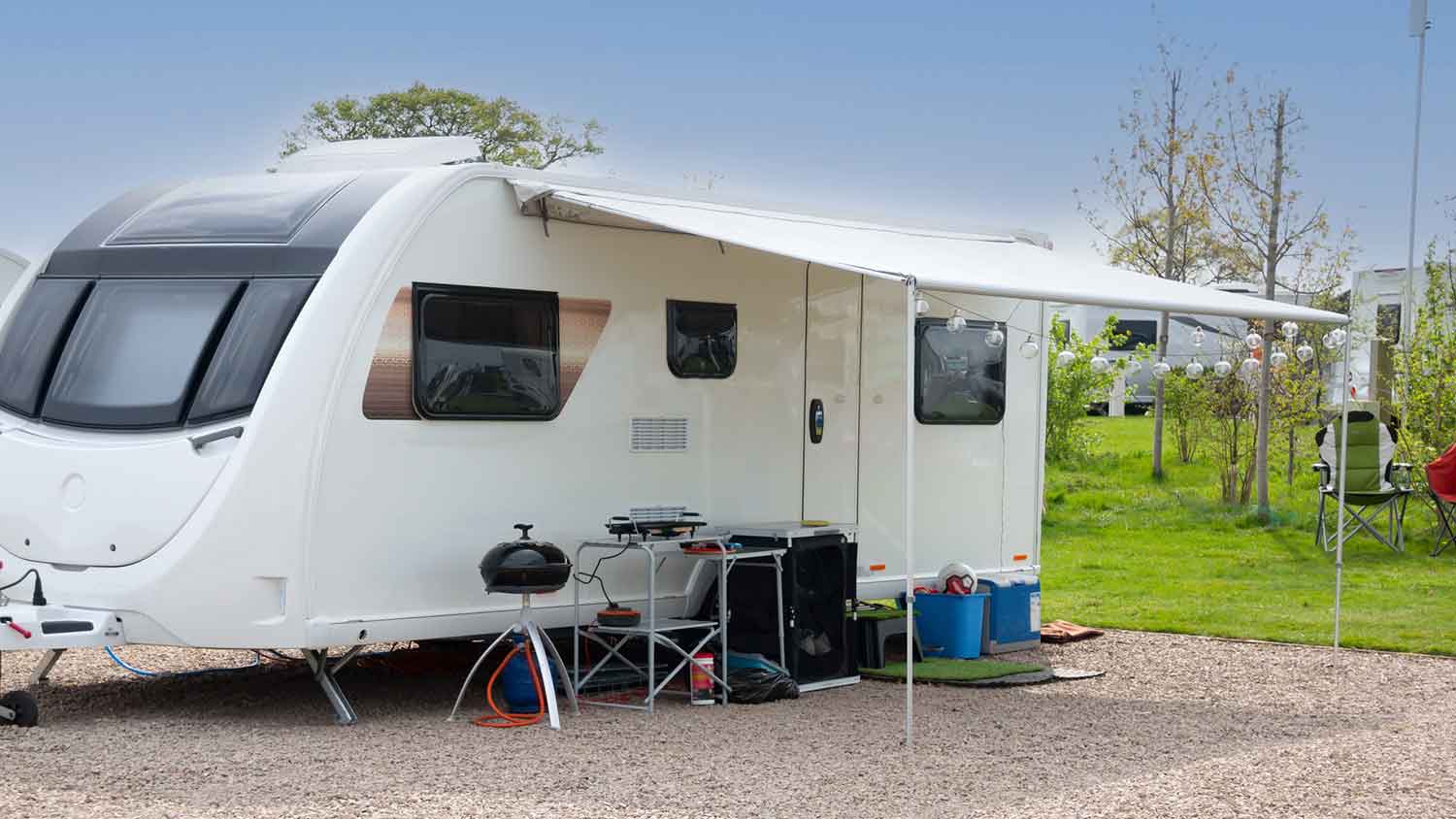
Portable awnings provide pop-up shade wherever and whenever you need it. Unlike other awnings, they can be folded down and taken wherever they’re needed. However, they may be less sturdy than other types of awnings since they’ll require a counterweight to keep them steady on the ground. Additionally, the set-up process for a portable awning can be somewhat labor-intensive.
| Pros | Cons |
|---|---|
| Pop-up shade wherever you need | Lots of set-up and take-down time and effort |
| Ultimate flexibility | Without proper counterweights, they may fly away |
Best for: One-off moments for temporary shade
4 Types of Awning Materials
Awning material matters as much as its style or retractability. That’s because your awning’s material affects its price and how well it holds up against the elements.
Fabric
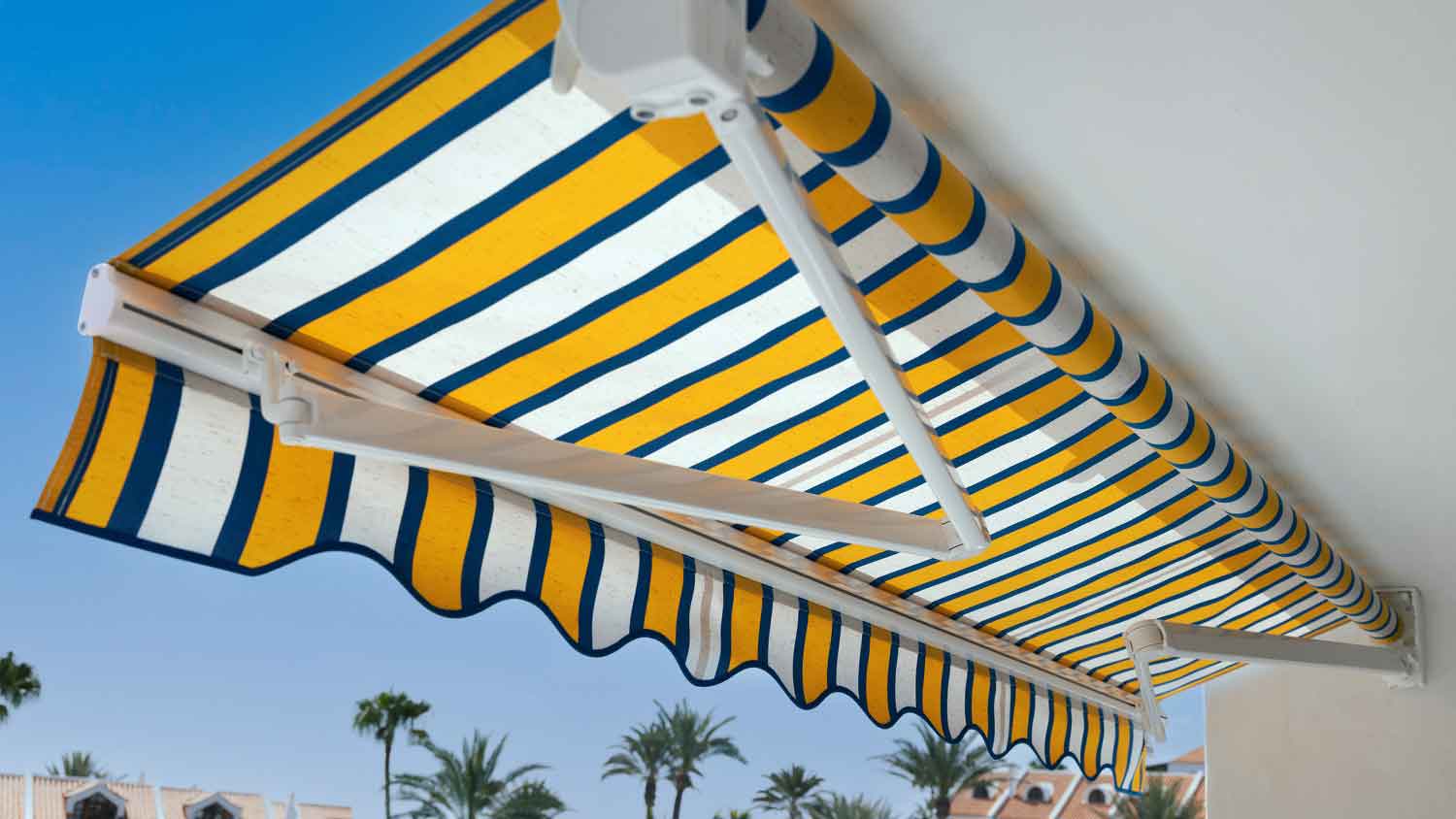
Fabric awnings are often made of polyester, but you can also find cotton and linen awnings. Most fabric options are relatively lightweight, so if you want to install an awning on your own, a fabric one is easier than some other material types. And they come in a variety of thicknesses, depending on how much shade and rain protection you want.
| Pros | Cons |
|---|---|
| Lightweight and easy to install | Less durable than other types |
| Come in a variety of thicknesses and styles | Fade in the sun over time |
Best for: A casual look and DIY installers
Sunbrella

Sunbrella awnings are technically fabric awnings, but they're distinct enough to have their own category. Sunbrella fabric is made from acrylic but it tends to look and feel like canvas. It's known for being extremely durable, as well as water-, mildew-, and fade-resistant, so it's a stellar option if longevity is at the top of your awning priority list. This fabric also does an exceptional job of blocking out the sun's rays.
| Pros | Cons |
|---|---|
| Water-, mildew-, and fade-resistant | More expensive than other types of fabric awnings |
| Good longevity and shade production | Not as durable as metal or polycarbonate |
Best for: The casual feel of fabric with an added layer of toughness
Metal
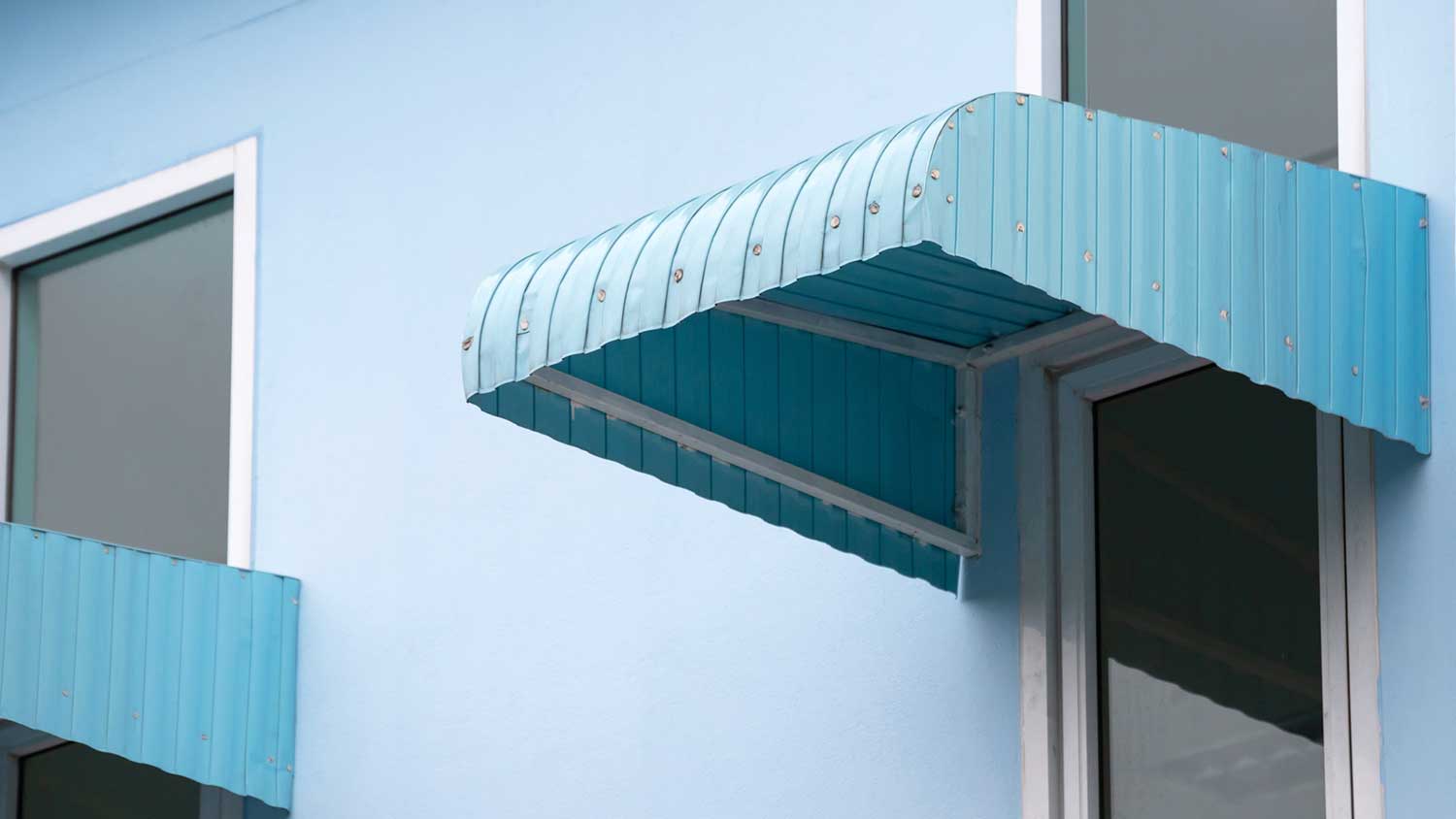
If you live in a region with particularly harsh weather, you might consider a metal awning. Usually composed of aluminum, these awnings do a great job of standing up to even the worst weather conditions, and they provide complete protection from precipitation.
| Pros | Cons |
|---|---|
| Very durable | Doesn’t offer the same breezy feel as fabric choices |
| Complete protection from rain, snow, and other elements | May be loud under precipitation |
Best for: Areas with a lot of precipitation
Polycarbonate
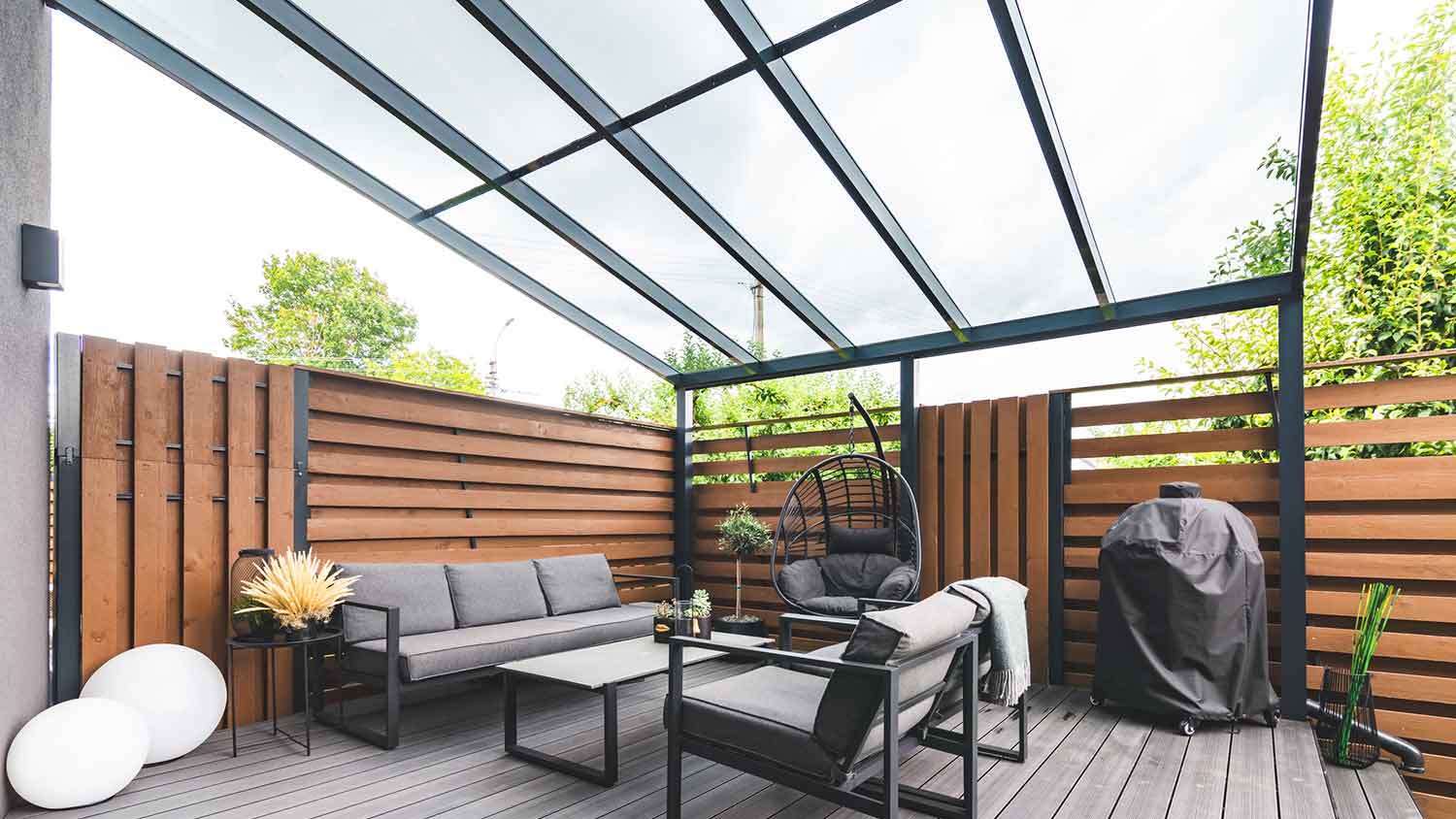
Polycarbonate awnings are made of a thermoplastic material that's typically transparent, like glass. Despite being transparent, polycarbonate actually does an amazing job of blocking out the entire UV spectrum while shielding your outdoor area from rain, snow, and other precipitation. They can be trickier to install than fabric awnings, but you can always call a local awning installer to take on the task for you.
| Pros | Cons |
|---|---|
| Transparent look creates open space | Tricky to install |
| Blocks out the entire UV spectrum | Installation is less DIYable and may be costly |
Best for: Those who favor a more open feeling but still want rain, sun, and snow protection
How Do You Determine Which Type of Awning Is Best for Your Home?
Choosing the right awning for your home isn’t just about looks. It’s about getting the most out of your outdoor space, matching your budget, and enhancing your home’s aesthetics. Consider the awning categories mentioned above and how they’ll affect your home’s comfort, curb appeal, privacy, accessibility, and more.
Placement and Purpose
Where do you want shade or shelter? Patio awnings transform outdoor living spaces, making them more comfortable. Window and door awnings are perfect for reducing sun glare indoors and keeping doorways dry. Side awnings are ideal for added privacy or wind control, especially on balconies or patios.
Shape and Style
Shape matters more than you think. Sloped awnings are excellent for patios because they offer shade and rain protection. If you want to add character to your windows or doors, concave or domed shapes bring style while flat awnings give a sleek, modern look, especially suited to larger areas.
Retractability
Ask yourself if you want flexibility or fixed shade. Motorized awnings bring instant shade with the push of a button, though they’re on the pricier side. Manual awnings are more affordable but require a little elbow grease with the hand crank. Fixed awnings offer dependable shade all the time but aren’t adjustable. And if you’re after something seasonal or temporary, a portable awning might work.
Material
Your choice of material is key to your awning’s durability, style, and maintenance. Fabric (like Sunbrella) adds a casual vibe with reliable sun protection. Metal awnings stand up to tough weather conditions while polycarbonate gives a modern, airy feel—blocking harmful UV rays without blocking your view.
Every decision affects cost and durability, so take a moment to weigh your priorities. And if you’re feeling a little lost, a professional awning contractor can guide you to the perfect match for your home and lifestyle.
Who Do You Contact to Install an Awning?
For your awning installation, it pays to call in a professional awning contractor. A skilled professional does more than make sure your awning is mounted safely. They position it at the perfect angle and height to deliver the best shade and protection possible. From retractable and motorized models to heavy-duty metal awnings, an expert has the know-how to anchor it securely, ensuring it stands strong through all types of weather. They’ll also take care of any unique structural tweaks to protect your home from accidental damage, which can be a real challenge without experience. By hiring a contractor, you skip the stress and gain the peace of mind that your new awning is safe, secure, and made to last.





- What Is an Awning? Discover the Different Types, Shapes, and Costs
- How to Install an Awning Like a Pro
- What Are Awning Windows and Are They Right for Your Home?
- 10 Tips on How to Make Windows More Energy Efficient
- 7 Covered Outdoor Kitchen Ideas for Breezy Summer Cooking
- 15 Types of Windows and How to Choose the Right Ones
- 9 Tips for Designing Your Dream Outdoor Entertainment Space
- Who Should I Call When I Have Water Leaking From the Top of a Door Frame?
- 14 Things to Consider Before Buying Windows
- How to Shade Your Backyard: 7 Ways to Block Out the Sun










